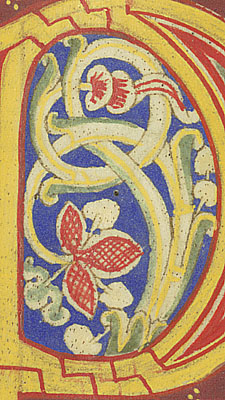
The Sacred Word
![]()
The veneration of sacred Scripture was a central feature of medieval culture.
Scriptural reading was a staple of the medieval cleric’s literary
diet, and cathedral art depicted scenes from the Bible for the benefit
of illiterate parishioners. In order to clarify ambiguous passages in
the Bible, Christian educators offered interpretations which, when approved
as orthodox teaching, were handed down as a part of sacred Tradition.
Within the first few centuries of the Christian era, an abundant literature
of interpretation arose, and over the course of later centuries the doctrines
of the early theologians were sifted to determine whether they qualified
as orthodoxy. In the twelfth century, theologians compiled these orthodox
interpretations into a collection known as the Glossa ordinaria, or "Standard
Gloss," which a reader of Scripture could consult with confidence
when in doubt over the meaning of a given passage.

Copyright
© 2002 Division of Rare & Manuscript
Collections
2B Carl A. Kroch Library, Cornell University, Ithaca, NY, 14853
Phone Number: (607) 255-3530. Fax Number: (607) 255-9524
For
reference questions, send mail to:
rareref@cornell.edu
If you have questions or comments about the site, send mail to: webmaster.